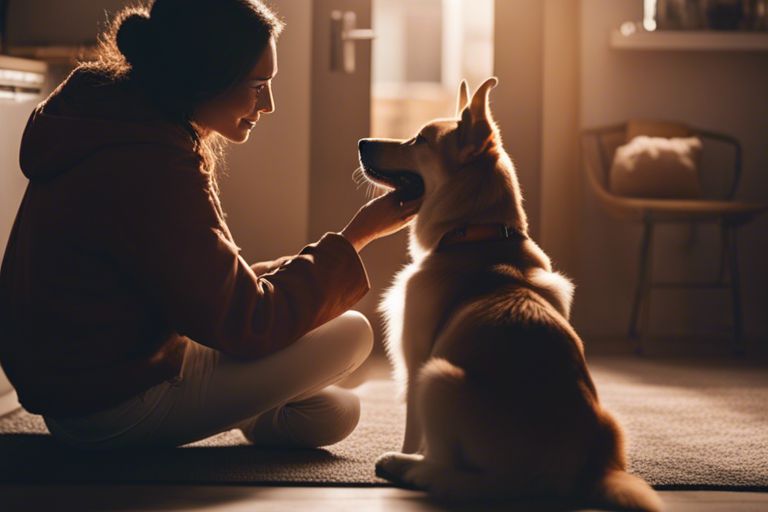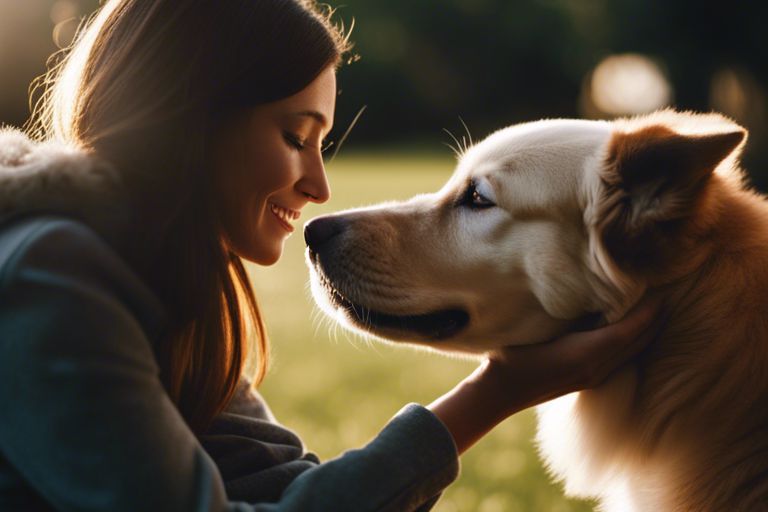Bonding with your dog goes beyond just training commands and daily routines; it requires a deep emotional understanding of your furry friend. Building a strong bond with your canine companion is based on the foundation of emotional connection and empathy. Understanding your dog’s emotions, needs, and behavioral cues is important in forming a loyal and lasting bond. In this blog post, we will research into the secret to nurturing a strong and meaningful relationship with your four-legged family member through emotional understanding.

Key Takeaways:
- Establish emotional connection: Building a strong bond with your dog requires understanding and responding to their emotional cues.
- Practice active listening: Pay attention to your dog’s body language, vocalizations, and behavior to better understand their needs and emotions.
- Show empathy and compassion: By being empathetic and showing compassion towards your dog, you can strengthen the emotional bond between you and your furry friend.
Understanding Canine Emotions
Recognizing Emotional Cues in Dogs
For a strong bond with your dog, it is crucial to recognize emotional cues exhibited by your furry friend. Dogs communicate their feelings through subtle body language, vocalizations, and facial expressions. Watch for signs like wagging tails, relaxed body posture, and attentive ears to understand when your dog is happy, anxious, or in distress.
How Dogs Express Their Feelings
Recognizing how dogs express their emotions is crucial in building a strong connection with them. Dogs convey their feelings primarily through body language, such as tail wagging, ear movement, and eye contact. Understanding these cues can help you respond appropriately to your dog’s needs and strengthen your emotional bond.
The way dogs express their feelings can vary based on their breed, personality, and past experiences. Some dogs may be more vocal, while others rely heavily on nonverbal cues. Pay attention to your dog’s individual signals to better understand their emotional state and strengthen your bond.
Communication Essentials
The Importance of Consistent Training
Even the most loving dog can benefit from consistent training. Training your dog not only helps to establish boundaries and guidelines, but also strengthens the bond between you and your furry friend. Dogs thrive on routine and structure, so consistent training provides them with the predictability they need to feel secure and happy.
Verbal and Non-Verbal Communication
To effectively communicate with your dog, you need to understand both verbal and non-verbal cues. While verbal commands are important for teaching your dog specific behaviors, non-verbal communication such as body language and tone of voice are equally crucial. Dogs are highly intuitive animals and often rely on these non-verbal cues to understand our emotions and intentions.
This is why maintaining a calm and assertive demeanor when interacting with your dog is important. Dogs can sense when we are anxious, frustrated, or angry, and it can greatly impact their behavior and trust towards us. By being mindful of both your verbal and non-verbal communication, you can build a strong and trusting relationship with your furry companion.
Building Trust and Friendship
Spending Quality Time Together
Time is the most precious gift you can give your dog. By spending quality time with your furry friend, you are not only building a stronger bond but also creating wonderful memories together. Whether it’s going for a walk in the park, playing fetch, or simply cuddling on the couch, these moments help strengthen the emotional connection between you and your dog.
Positive Reinforcement Techniques
Building a positive relationship with your dog involves using effective reinforcement techniques. This can include praise, treats, toys, and affection as rewards for good behavior. By focusing on positive reinforcement, you are encouraging your dog to repeat desirable actions and behaviors, ultimately fostering a harmonious and trusting relationship.
To further enhance positive reinforcement techniques, consistency is key. Make sure to reward your dog immediately after they exhibit the desired behavior and use a clear, upbeat tone to communicate your approval. Note, positive reinforcement is about reinforcing good behavior rather than punishing bad behavior. This approach strengthens the bond between you and your dog by creating a positive and supportive environment.
Overcoming Behavioral Challenges
Identifying the Root of Behavioral Issues
Noticing behavioral issues in your dog is the first step towards addressing them. Whether it’s excessive barking, aggression, or separation anxiety, understanding the root cause is crucial. Behavioral problems can stem from fear, lack of training, past trauma, or even medical issues. Observing your dog’s behavior patterns and seeking guidance from a professional can help pinpoint the underlying reasons for their actions.
Creating a Supportive Environment for Change
Behavioral change requires a supportive environment that fosters positive reinforcement and consistency. By setting clear boundaries, implementing training techniques, and rewarding good behavior, you can create a structured and encouraging atmosphere for your dog. Patience and understanding are key components in helping your furry companion unlearn unwanted behaviors and develop new, healthier habits.
Behavioral challenges can be overcome with dedication and commitment from both you and your dog. By addressing the root causes of behavioral issues and creating a supportive environment for change, you can strengthen your bond and help your pet thrive emotionally.
To wrap up
From above, it is evident that the key to building a strong bond with your dog lies in emotional understanding. By respecting and recognizing their feelings, building trust through positive reinforcement, and communicating effectively through body language and tone of voice, you can create a deep connection with your furry companion. This emotional connection is imperative for a harmonious and fulfilling relationship with your dog, leading to a lifetime of companionship, love, and mutual understanding.
FAQ
Q: How can I build a strong bond with my dog?
A: Building a strong bond with your dog requires emotional understanding. Spend quality time with your dog, communicate effectively through positive reinforcement, and show love and care consistently to create a strong emotional connection.
Q: Why is emotional understanding important in bonding with your dog?
A: Emotional understanding is crucial in bonding with your dog because dogs are social beings that thrive on emotional connections. By understanding your dog’s emotions, you can respond appropriately to their needs, build trust, and strengthen the bond between you and your furry companion.
Q: What are some tips for enhancing emotional understanding with my dog?
A: To enhance emotional understanding with your dog, pay attention to their body language, facial expressions, and vocalizations. Practice active listening, be patient and empathetic, and be consistent in your interactions. By tuning in to your dog’s emotions and responding positively, you can build a deeper and more meaningful bond with them.

